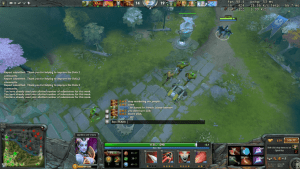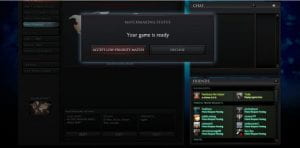The Plan:
Dota 2 is a highly competitive multiplayer game where players choose heroes and fight AI and other players to level up, gain new skills, and get items. Each hero has specific roles they fill, and deviating from these roles often leads to losing, and results anger and abuse from teammates. So for my intervention, I decided to play heroes using opposite roles than they should be played, and observe my teammates results.
Initial Progress:
Initial progress was good (and by that I mean bad), where I was getting some abuse. When playing carries, if you don’t get the right items, you become dead weight on the team, and here is where I ran into some issues. Playing support, you are largely item-independent, so even though I wasn’t playing a support role, people generally had no comment. However, carry games led to abuse since I wasn’t doing my appropriate job.
Problem:
Dota 2 has voice chat, so it was sometimes challenging to get evidence of chat abuse, since most of it was spoken. I had twp main ways of getting responses from this. Sometimes, I would stay completely silent no matter what anyone would say to me. Other times, I would be up front about me doing an art piece, and generally people were accepting. However, this did not lead to the chat abuse I wanted, since I was still getting replies through voice chat.
Results:
Although I didn’t get quite the responses through text that I was expecting, I did reach my end goal: Low Priority! My next couple games will suck, but art is pain.


